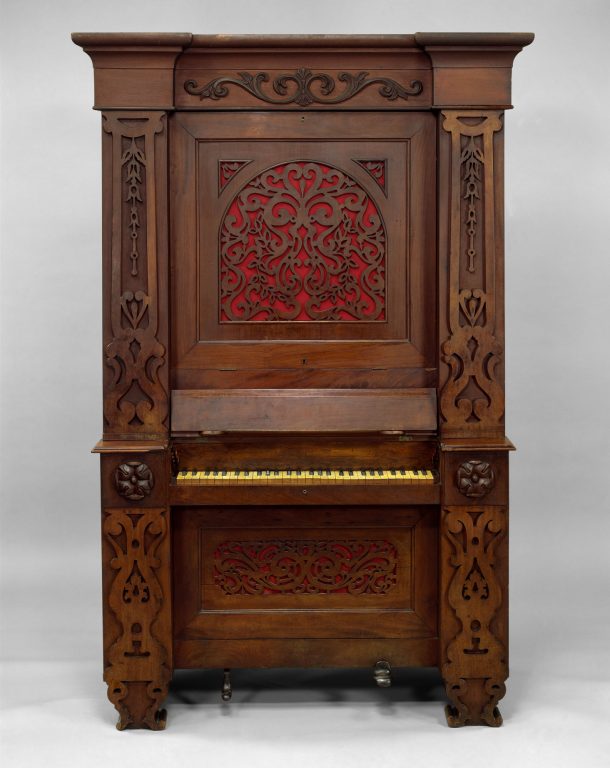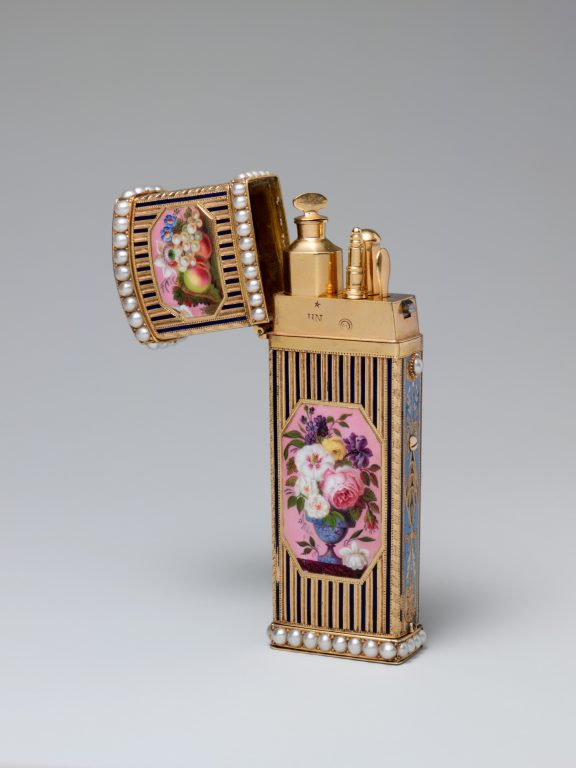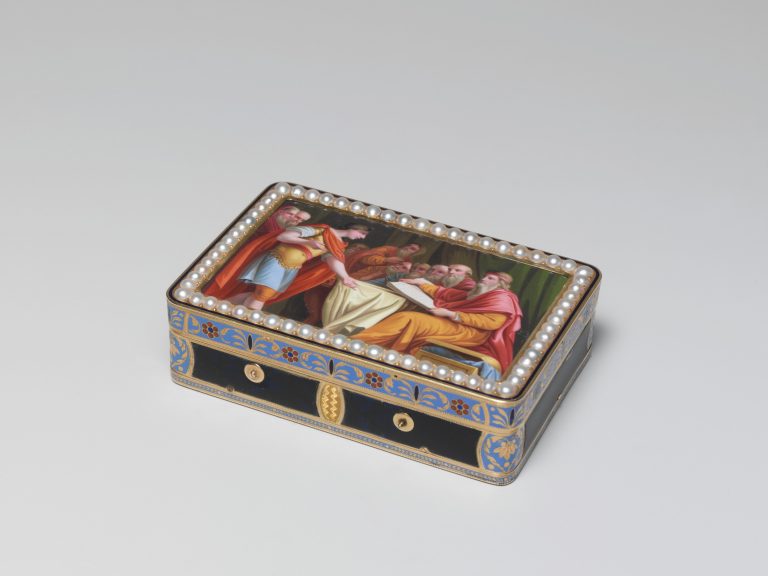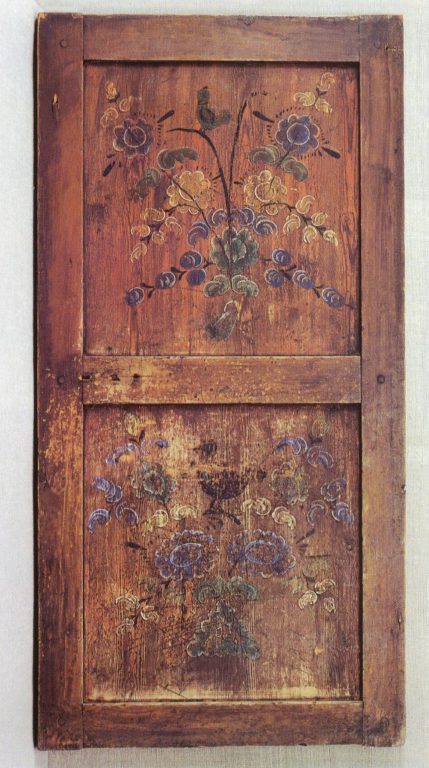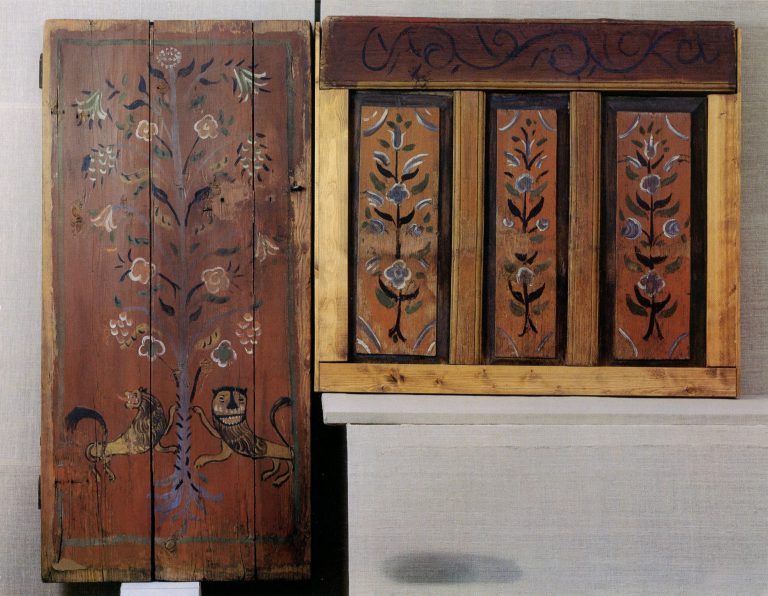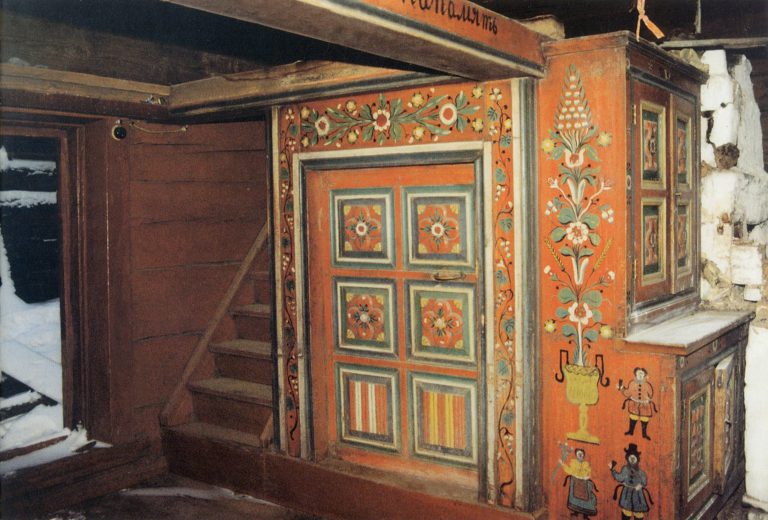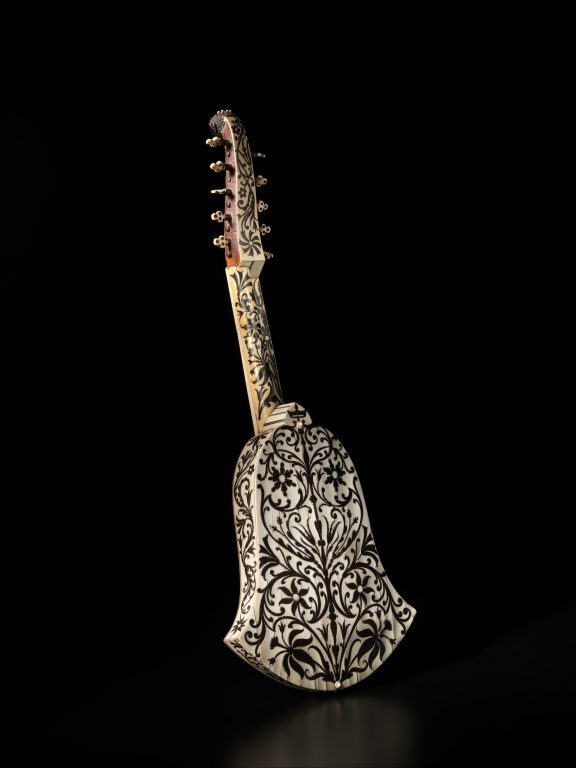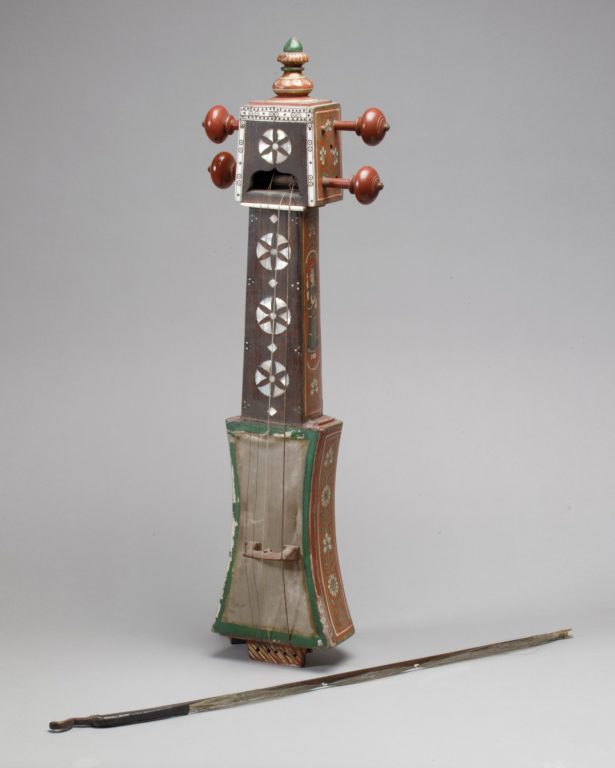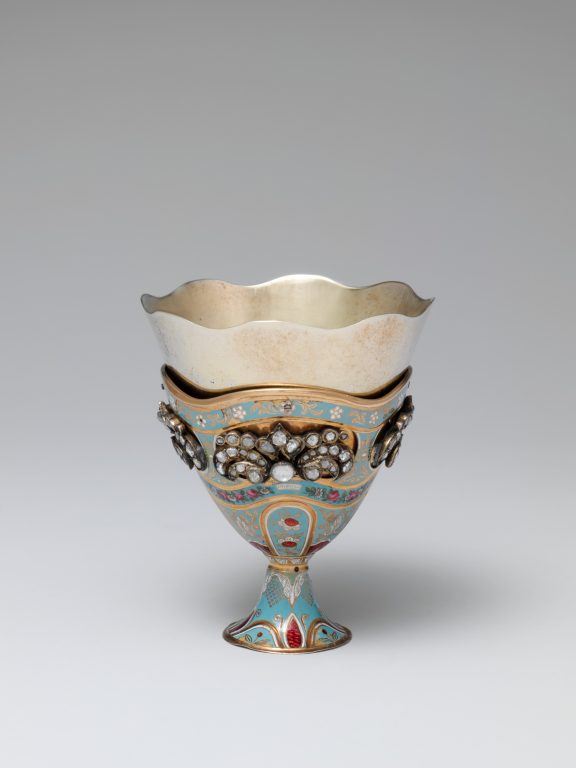

France
-
Objectmusical instrument: Accordion
-
Author of the objectAlexandre Pere & Fils
-
Type of arts & crafts 1
-
Type of arts & crafts 2
-
MediumWood, metal, mastic, brass, tortoiseshell, gilt brass, mother-of-pearl, silver foil
-
SizeClosed: 15 3/16 Г— 5 5/16 Г— 6 7/8 in. (38.5 Г— 13.5 Г— 17.5 cm)
-
Geography details
Town Paris,
France -
Country today
-
Date1850-55
-
CultureFrench
-
Type of sourceDatabase “Metropolitan Museum of Art”
-
Fund that the source refers toMetropolitan Museum of Art
-
This instrument is profusely decorated with foliate designs in blue, green, pink and white enamel-like mastic with brass and tortoiseshell inlays. The twenty-four mother-of-pearl keys each operate two notes (one on push and a second on pull). The multifold bellows are lined with embossed silver foil bearing green flocking.
In the 1830s, Paris became a major center of accordion production, which flourished until the Franco-Prussian War of 1870-71. To compete with makers in Austria and Germany, Paris manufacturers successfully marketed their instruments by applying rich and costly decoration. This instrument follows a model by Demian of 1831, and is one of two surviving instrument of this type to have a second button row for the accidentals, it is therefore known as a “Paris accordions perfectionnes” or a “perfected” accordion. Only two such instruments are known to exist.



